- Colorful Blooms to Brighten Your Space
- Roses
- Tulips
- Sunflowers
- Pansies
- Dahlias
- Marigolds
- Low-Maintenance Flowers for Easy Care
- Fragrant Flowers for a Sensory Garden
- Additional Fragrant Flowers for Your Sensory Garden
- Drought-Tolerant Flowers for Dry Climates
- 1. Lavender
- 2. Agastache
- 3. Yarrow
- 4. Coneflower
- 5. Verbena
- 6. Sedum
- 7. Gaillardia
- Native Flowers to Support Local Wildlife
- Milkweed (Asclepias spp.)
- Black-eyed Susan (Rudbeckia hirta)
- Purple Coneflower (Echinacea purpurea)
- Cardinal Flower (Lobelia cardinalis)
- Goldenrod (Solidago spp.)
- Climbing Flowers for Vertical Gardens
- Rose
- Clematis
- Trumpet Vine
- Passionflower
- Morning Glory
- Sweet Pea
- Choosing the Right Climbing Flowers
- Long-Blooming Flowers for Continuous Color
- 1. Geraniums
- 2. Petunias
- 3. Coneflowers
- 4. Salvia
- 5. Marigolds
- Deer-Resistant Flowers for Pest-Free Gardening
- 1. Marigolds
- 2. Lavender
- 3. Daffodils
- 4. Foxgloves
- 5. Roses
- 6. Bee Balm
- 7. Salvia
- 8. Alliums
- Q&A:
- What are some of the best outdoor flowers for a garden?
- What factors should I consider when choosing outdoor flowers for my garden?
- Can you suggest some outdoor flowers that are low-maintenance?
- Are there any outdoor flowers that are known for attracting butterflies?
- What are some outdoor flowers that can tolerate hot and dry climates?
- What are some trailing flowers that are suitable for hanging baskets?
- Video: The Best Flowers To Boost Vegetable Gardens
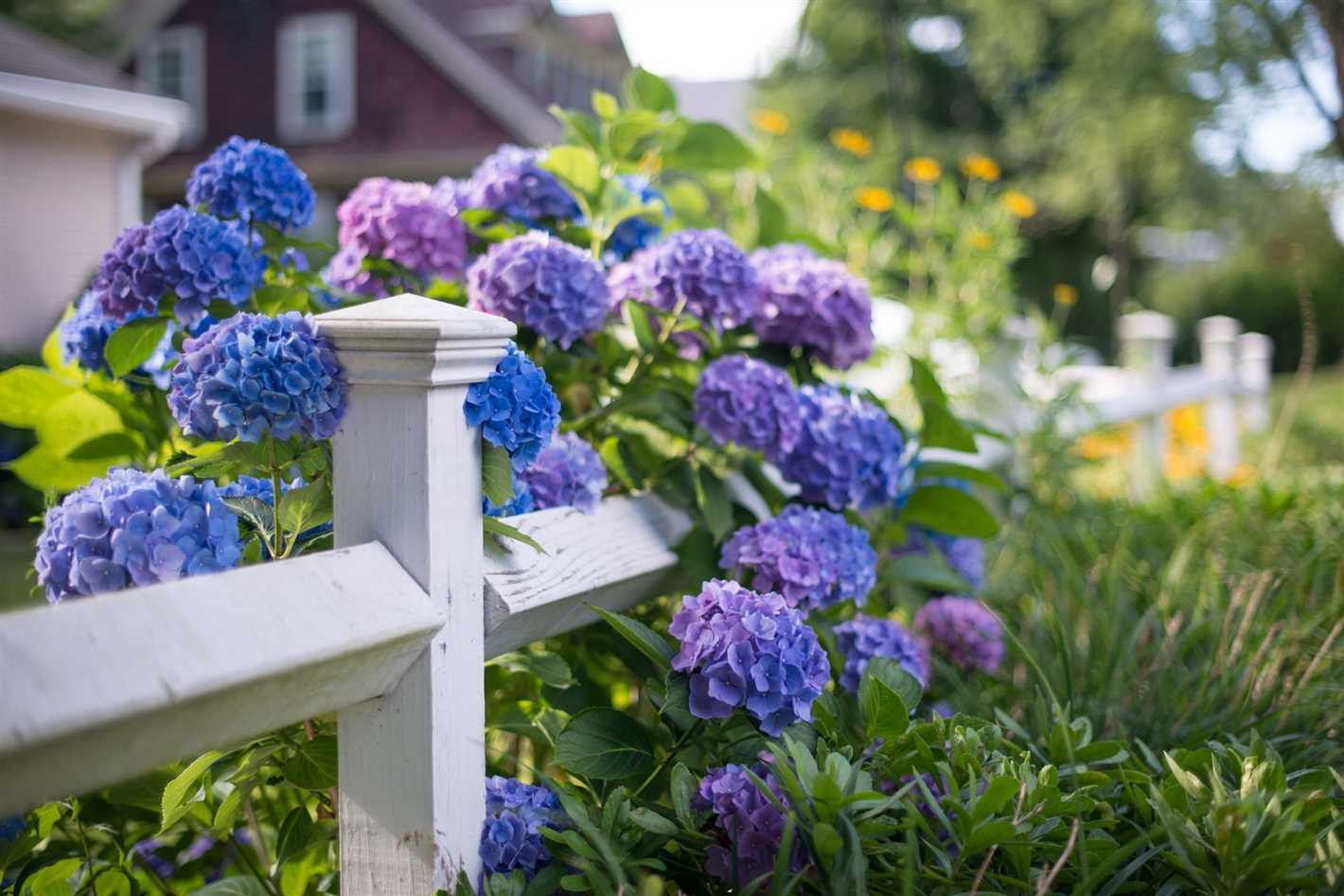
Gardening is a wonderful hobby that allows us to bring beauty and color into our outdoor spaces. One of the key elements in creating a stunning garden is choosing the right flowers. With so many options available, it can be overwhelming to know which ones will thrive in your particular climate and soil conditions. In this guide, we will explore some of the best outdoor flowers that are sure to brighten up your garden.
When it comes to selecting flowers for your garden, it’s important to consider factors such as sunlight, soil type, and maintenance requirements. Some flowers, like roses and tulips, prefer full sun, while others, like impatiens and begonias, thrive in shady areas. Additionally, certain flowers, like lavender and succulents, are more drought-tolerant and require less water. By understanding the specific needs of each flower, you can ensure that you create a garden that is both aesthetically pleasing and easy to maintain.
One of the best outdoor flowers for your garden is the rose. Known for its classic beauty and intoxicating fragrance, roses come in a variety of colors and petal formations. They are a symbol of love and romance and can add a touch of elegance to any garden. Other popular choices for outdoor flowers include tulips, which are known for their vibrant colors, and daisies, which are simple yet cheerful. For a more exotic look, consider planting orchids or lilies, which can add a touch of drama and intrigue to your garden.
It’s important to choose flowers that match your personal style and preference. Whether you prefer a more traditional, formal garden or a wild, natural look, there are flowers to suit every taste. Remember to consider the height, texture, and color of the flowers as well as their bloom time and lifespan. By carefully selecting the right flowers for your garden, you can create a beautiful and inviting outdoor space that you can enjoy for years to come.
Colorful Blooms to Brighten Your Space
If you are looking to add a burst of color to your outdoor space, there are plenty of vibrant flowers to choose from. These colorful blooms will not only add beauty and visual interest to your garden, but they can also attract pollinators like bees and butterflies. Here are some of the best outdoor flowers to consider:
Roses
Roses are classic flowers that come in a wide range of colors, including red, pink, yellow, and white. They are known for their luxurious blooms and sweet fragrance. If you want a flower that will make a statement in your garden, roses are a great choice. They thrive in full sun and require regular watering.
Tulips
Tulips are known for their stunning, cup-shaped flowers that come in a variety of colors. They are a popular choice for spring gardens and can brighten up any outdoor space. Tulips prefer cool temperatures and well-drained soil. Plant them in the fall for beautiful blooms in the spring.
Sunflowers
Sunflowers are tall, vibrant flowers that can instantly add a pop of color to your garden. They come in shades of yellow, orange, and red, and are known for their large, cheerful blooms. Sunflowers are easy to grow from seeds and require full sun to thrive.
Pansies
Pansies are small flowers with delicate petals in a variety of colors. They are perfect for adding a splash of color to your garden beds or hanging baskets. Pansies can tolerate cooler temperatures and are a great choice for fall and winter gardens.
Dahlias
Dahlias are known for their showy, multi-petaled flowers that come in a wide range of colors and sizes. They are a favorite among gardeners for their long-lasting blooms and ability to attract pollinators. Dahlias require full sun and well-drained soil.
Marigolds
Marigolds are vibrant flowers that come in shades of yellow, orange, and red. They are easy to grow and can tolerate a variety of soil conditions. Marigolds are also known for their ability to repel pests, making them a great choice for natural pest control in your garden.
By choosing colorful blooms for your outdoor space, you can create a beautiful and inviting garden that will brighten your day and delight your senses. Whether you prefer roses, tulips, sunflowers, pansies, dahlias, or marigolds, there is a wide variety of flowers to choose from. Planting a combination of these colorful blooms will ensure a vibrant and stunning garden all season long.
Low-Maintenance Flowers for Easy Care
When it comes to gardening, not everyone has the time or energy to devote to high-maintenance flowers. Luckily, there are plenty of low-maintenance options that will still add beauty to your garden without requiring constant attention. Here are some of the best low-maintenance flowers you can choose for easy care:
- Succulents: Succulents are known for their ability to store water in their leaves, making them incredibly drought-tolerant. They come in a wide variety of shapes, sizes, and colors, and require very little care.
- Marigolds: Marigolds are easy to grow and can tolerate a wide range of soil conditions. They also have natural pest-repellent properties, making them a great choice for low-maintenance gardening.
- Petunias: Petunias are known for their long bloom time and ability to withstand heat and drought. They come in a variety of colors and are perfect for adding a burst of color to your garden without much effort.
- Zinnias: Zinnias are another low-maintenance flower that blooms in a wide range of colors. They are heat and drought-tolerant and attract butterflies, making them a great choice for any garden.
- Black-eyed Susans: Black-eyed Susans are a hardy perennial flower that requires very little care. They are drought-tolerant and attract butterflies and bees, making them a great addition to any low-maintenance garden.
In addition to these low-maintenance flowers, it’s a good idea to choose plants that are native to your area. Native plants are well adapted to the local climate and soil conditions, meaning they will require less care and maintenance to thrive. With the right selection of low-maintenance flowers, you can enjoy a beautiful garden without the stress and hassle of constant upkeep.
Fragrant Flowers for a Sensory Garden
A sensory garden is a type of garden that is designed to stimulate the senses, including sight, sound, touch, taste, and smell. Fragrant flowers are an essential component of a sensory garden, as they can create a delightful and inviting atmosphere. Here are some wonderful options for fragrant flowers to include in your sensory garden:
- Roses: Known for their intoxicating scent, roses are a classic choice for a sensory garden. There are many different varieties of roses to choose from, each with its own unique fragrance.
- Jasmine: Jasmine flowers release a sweet, exotic fragrance that is often associated with romance. This climbing vine can add a touch of elegance to any sensory garden.
- Lavender: The calming scent of lavender is a favorite for many people. The purple flowers can also add a beautiful splash of color to your garden.
- Sweet Alyssum: This delicate flower produces a honey-like fragrance that attracts pollinators such as butterflies and bees. It is also easy to grow and can be a great addition to any sensory garden.
Additional Fragrant Flowers for Your Sensory Garden
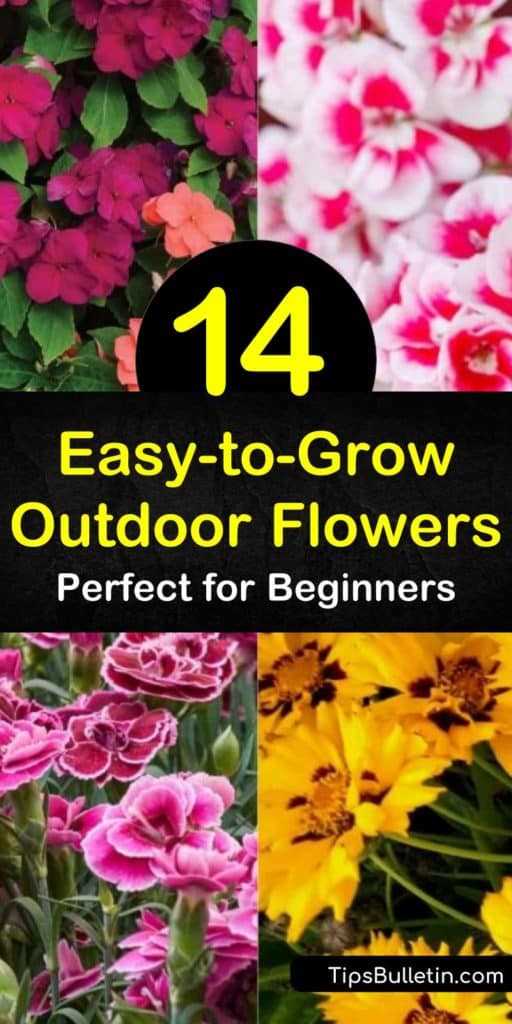

Here are some more fragrant flowers that can enhance the sensory experience in your garden:
- Honeysuckle: Honeysuckle flowers emit a sweet fragrance that is particularly potent in the evening. This climbing vine can provide a beautiful backdrop for your sensory garden.
- Lilac: Lilac flowers are known for their strong and refreshing scent. They bloom in various shades of purple and can add a touch of elegance to your garden.
- Gardenia: The gardenia flower produces a highly fragrant scent that is often described as creamy and tropical. These white flowers can add a touch of luxury to your sensory garden.
- Sweet Pea: Sweet peas are known for their lovely scent, which can vary from subtle to intense depending on the variety. These colorful flowers are a great choice for a sensory garden.
Remember to consider the growing conditions in your garden and choose flowers that are suitable for your climate and soil type. By incorporating fragrant flowers into your sensory garden, you can create a space that delights all of your senses.
Drought-Tolerant Flowers for Dry Climates
Living in a dry climate can pose a challenge when it comes to gardening. However, there are many beautiful flowers that can thrive in these conditions. Here are some drought-tolerant flowers that will add color and vibrancy to your garden even in the hottest and driest of climates.
1. Lavender
Lavender is not only known for its lovely fragrance but also for its ability to withstand drought. This hardy perennial will add a touch of purple to your garden and attract bees and butterflies.
2. Agastache
Agastache, also known as hummingbird mint, is a great choice for dry climates. With its vibrant flowers and aromatic foliage, it will not only survive but thrive in hot and dry conditions.
3. Yarrow
Yarrow is a versatile flower that is drought-tolerant and attracts pollinators. With its feathery foliage and clusters of flowers in shades of yellow, pink, and white, yarrow will add beauty to your garden even in the driest of climates.
4. Coneflower
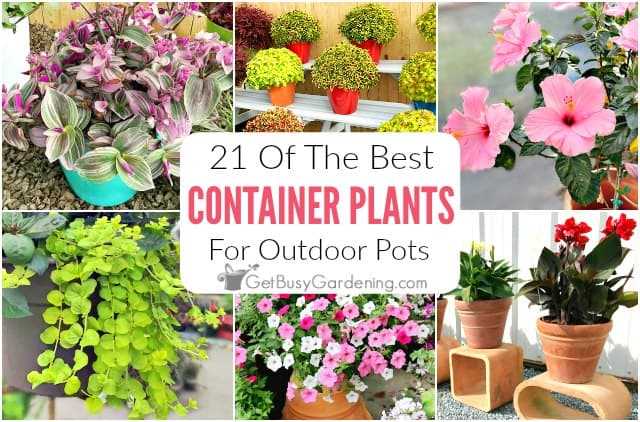

Coneflower, also known as Echinacea, is a popular choice for dry climates. Its showy flowers, which come in various shades of pink, purple, and white, will brighten up your garden and attract butterflies and bees.
5. Verbena
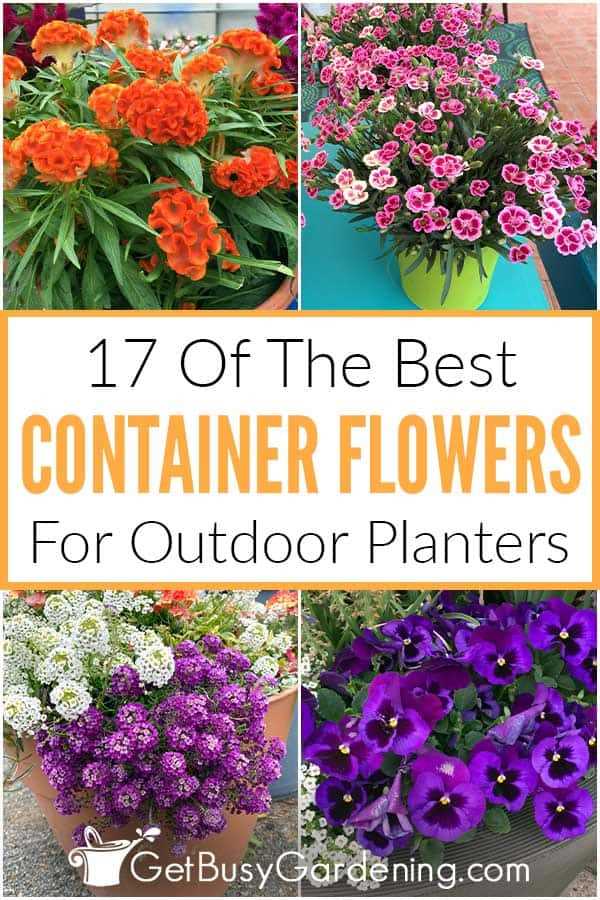

Verbena is a low-maintenance flower that can tolerate drought and heat. With its clusters of flowers in shades of purple, red, pink, and white, verbena will add a splash of color to your garden throughout the summer months.
6. Sedum
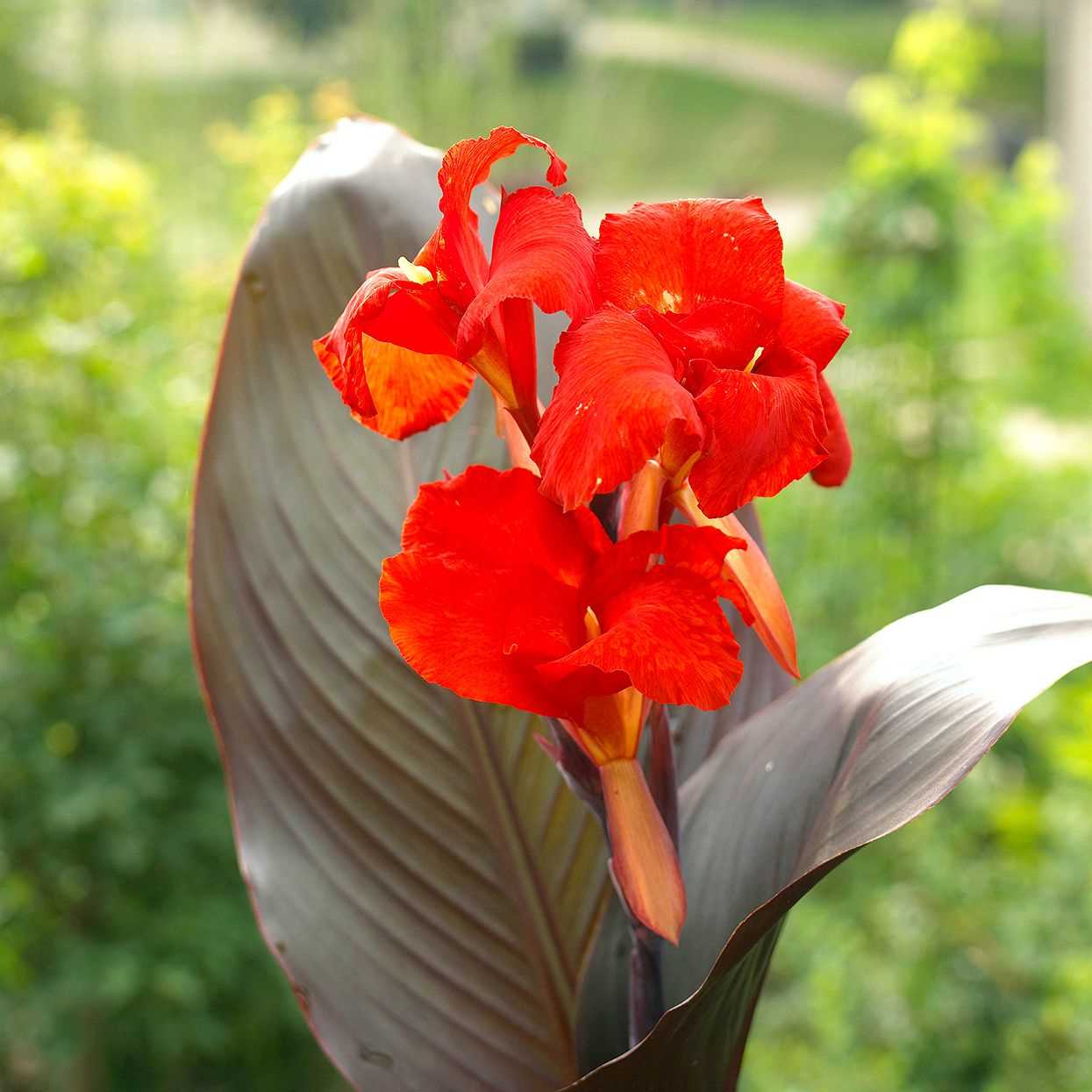

Sedum, also known as stonecrop, is a succulent plant that can withstand dry conditions and poor soil. With its fleshy leaves and vibrant flowers, sedum will add texture and interest to your garden.
7. Gaillardia
Gaillardia, or blanket flower, is a tough and drought-tolerant flower that is native to North America. With its vibrant red and yellow flowers, gaillardia will attract butterflies and bees to your garden.
When planning your garden in a dry climate, it is important to choose flowers that are adapted to these conditions. By selecting drought-tolerant flowers, you can create a beautiful garden that will thrive even in the harshest of climates.
Native Flowers to Support Local Wildlife
Gardening with native flowers not only adds beauty to your garden but also provides essential resources for local wildlife. Native plants are adapted to the local climate and have co-evolved with local insects, birds, and animals, making them a valuable source of food and habitat. Here are some native flowers that can help support and attract wildlife to your outdoor space:
Milkweed (Asclepias spp.)
Native to North America, milkweed is an important plant for monarch butterflies. Monarch caterpillars exclusively feed on milkweed leaves, while adult butterflies rely on the nectar from its flowers for energy. By planting milkweed in your garden, you can help support the declining monarch population.
Black-eyed Susan (Rudbeckia hirta)
Black-eyed Susans are vibrant, daisy-like flowers that attract a wide variety of bees, butterflies, and birds. They provide nectar and pollen for bees and butterflies, and their seed heads are a valuable food source for birds during the winter months.
Purple Coneflower (Echinacea purpurea)
Purple coneflowers are not only beautiful, but they also provide nectar for butterflies, bees, and other pollinators. Their seeds are also a favorite of finches and other seed-eating birds. Planting purple coneflowers can help support both pollinators and seed-eating birds in your garden.
Cardinal Flower (Lobelia cardinalis)
The vibrant red flowers of the cardinal flower are highly attractive to hummingbirds. Hummingbirds rely on the nectar from these tubular flowers for sustenance. Adding cardinal flowers to your garden can help attract these fascinating birds and provide them with a reliable food source.
Goldenrod (Solidago spp.)
Goldenrod is a late-season bloomer that attracts a wide variety of pollinators, including bees, butterflies, and beetles. Its abundant flowers provide nectar for these insects when other food sources may be scarce. Goldenrod also serves as a host plant for various moth and butterfly species.
By incorporating native flowers into your garden, you can create a welcoming space for local wildlife. Remember to provide a variety of flowers that bloom at different times of the year to ensure a continuous food source for pollinators and seed-eating birds.
Climbing Flowers for Vertical Gardens
Climbing flowers are a great addition to any vertical garden. They not only add color and beauty, but also create a sense of height and depth. Whether you have a small balcony or a large backyard, there are climbing flowers that can thrive in your space. Here are some popular choices:
Rose
Roses are classic climbing flowers that have been loved for centuries. They come in a variety of colors and can be trained to climb up arbors, trellises, and walls. Some popular climbing rose varieties include New Dawn, Climbing Iceberg, and Don Juan.
Clematis
Clematis is another popular choice for vertical gardens. With their large, showy flowers, clematis can add a splash of color to any space. Some popular varieties include Nelly Moser, Jackmanii, and Sweet Autumn.
Trumpet Vine
Trumpet vine, also known as Campsis radicans, is a fast-growing climber that produces vibrant orange or red trumpet-shaped flowers. It can quickly cover walls, fences, and trellises, making it an excellent choice for creating a lush and vibrant vertical garden.
Passionflower
Passionflowers are known for their unique and intricate flowers. These climbers can add a tropical touch to your vertical garden with their exotic blooms. Passionflower vines can grow quickly and cover a large area, so they are ideal for creating a lush and dense vertical garden.
Morning Glory
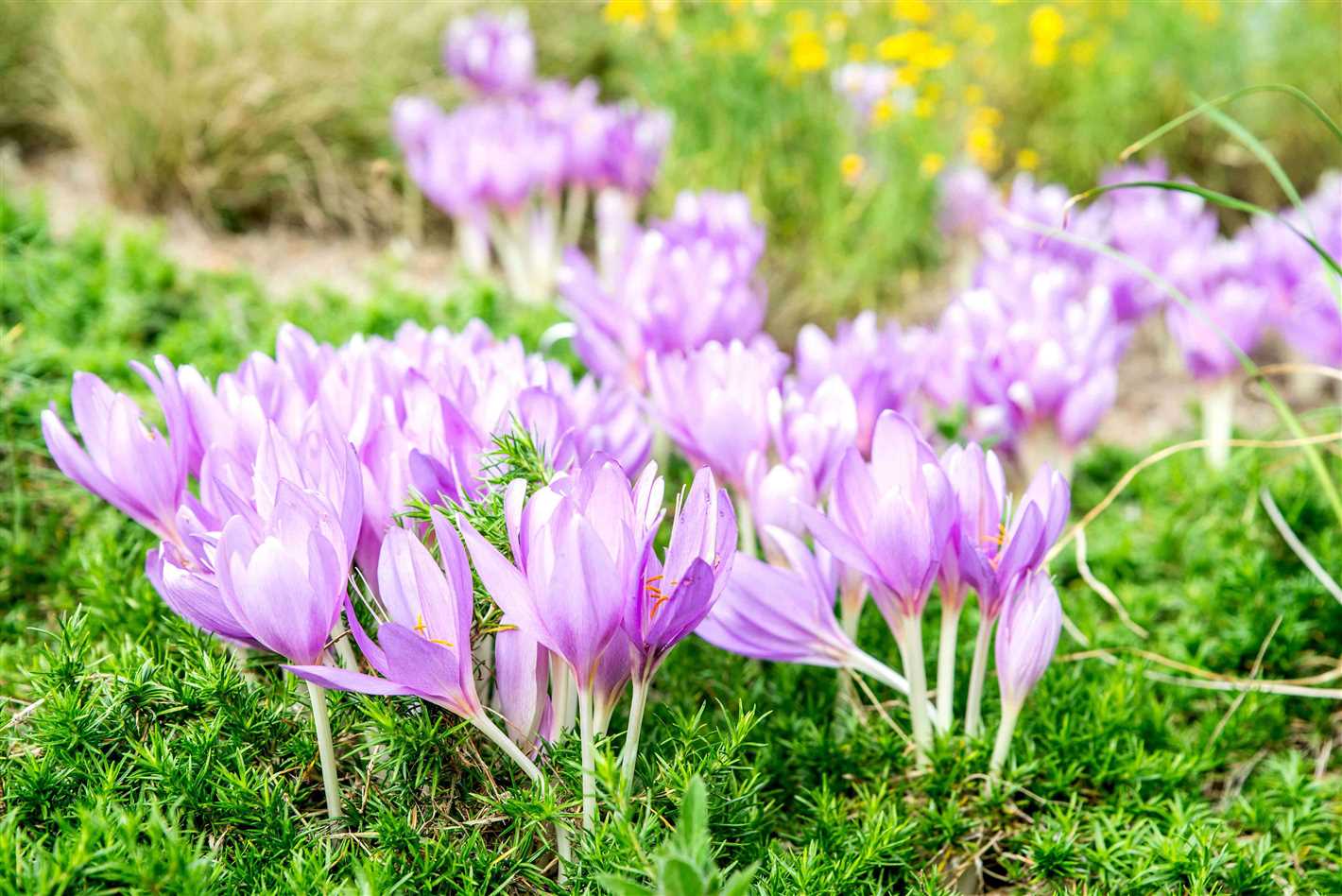

Morning glory is a popular climbing flower that is known for its bright and colorful blooms. They are easy to grow and can quickly cover walls, fences, and arbor. Some popular morning glory varieties include Heavenly Blue, Grandpa Ott, and Sunrise Serenade.
Sweet Pea
Sweet peas are delicate and fragrant climbers that are perfect for vertical gardens. With their sweet scent and pastel-colored blooms, they can create a romantic and charming atmosphere in your outdoor space. Sweet peas are often grown on trellises or fences for support.
Choosing the Right Climbing Flowers
When choosing climbing flowers for your vertical garden, consider the growing conditions of your space. Some flowers, like roses, require full sun, while others, like clematis, prefer partial shade. It’s also important to think about the size and structure of your vertical elements, as some climbers may require more support than others.
Additionally, consider the maintenance requirements of the flowers you choose. Some climbers may require regular pruning or training to keep them in check, while others are more low-maintenance. Research the specific needs of each flower before planting to ensure their success in your vertical garden.
| Flower | Growing Conditions | Support | Maintenance |
|---|---|---|---|
| Rose | Full sun | Sturdy trellis or arbor | Regular pruning |
| Clematis | Partial shade | Trellis or pergola | Regular pruning |
| Trumpet Vine | Full sun | Strong support like a wall or fence | Regular pruning |
| Passionflower | Full sun | Trellis or arbor | Regular pruning |
| Morning Glory | Full sun | Any support, such as trellis or fence | Minimal maintenance |
| Sweet Pea | Full sun to partial shade | Trellis or fence | Regular pruning |
By selecting the right climbing flowers for your vertical garden, you can create a stunning and vibrant outdoor space. Consider the growing conditions and maintenance requirements of each flower and choose those that will thrive in your specific space. With a little care and attention, your vertical garden can become a beautiful focal point in your outdoor living area.
Long-Blooming Flowers for Continuous Color
When it comes to creating a vibrant and colorful outdoor garden, choosing long-blooming flowers is key. These flowers will provide continuous color and beauty throughout the growing season, ensuring that your garden remains lively and attractive all year round. Here are some of the best long-blooming flowers to consider for your garden:
1. Geraniums
Geraniums are popular flowers known for their long-blooming period. These versatile flowers come in a wide range of colors and varieties, making them a great choice for any garden. Whether you prefer bright and bold shades or more muted tones, you’re sure to find a geranium that suits your taste. Plant them in containers or borders for a pop of color that lasts from spring to fall.
2. Petunias
Petunias are another excellent choice for a long-blooming garden. These flowers come in both trailing and upright varieties, making them versatile for a range of garden designs. With regular deadheading and proper care, petunias can bloom from spring until the first frost. Their vibrant blooms are sure to attract attention and add beauty to any outdoor space.
3. Coneflowers
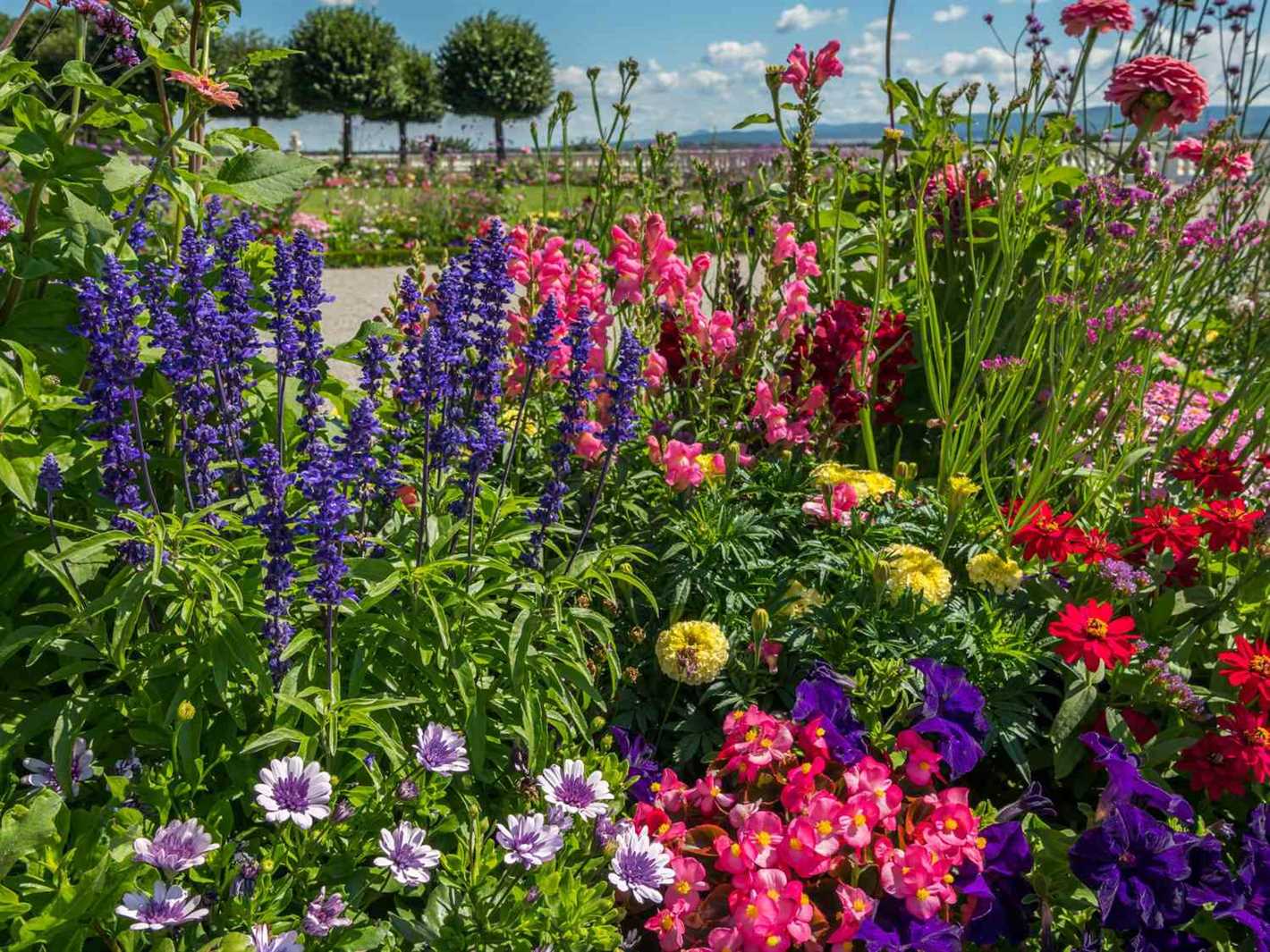

Coneflowers, also known as Echinacea, are not only long-blooming but also attract pollinators like bees and butterflies to your garden. These hardy flowers bloom from early summer to fall, adding pops of color to your garden. Coneflowers come in various shades, including purple, pink, and white, allowing you to create a stunning and diverse floral display.
4. Salvia
Salvia is a low-maintenance flower that offers long-lasting blooms in various colors, including blue, purple, and red. These flowers can bloom from early summer to late fall, making them an excellent choice for a long-blooming garden. Salvia is also known for attracting hummingbirds, making it a favorite among bird lovers.
5. Marigolds
Marigolds are one of the easiest flowers to grow and maintain. These cheerful flowers come in bright shades of yellow and orange, bringing a burst of color to any garden. With regular deadheading, marigolds can bloom from spring until the first frost. They are also known for repelling pests, making them a practical and beautiful addition to your garden.
| Flower | Blooming Period | Attracts Pollinators | Colors | Additional Benefits |
|---|---|---|---|---|
| Geraniums | Spring to fall | No | Various | Versatile and great for containers or borders |
| Petunias | Spring to first frost | No | Various | Trailing or upright varieties available |
| Coneflowers | Early summer to fall | Yes | Purple, pink, white | Attracts bees and butterflies |
| Salvia | Early summer to late fall | Yes | Blue, purple, red | Attracts hummingbirds |
| Marigolds | Spring to first frost | No | Yellow, orange | Repels pests |
- Planting a combination of these long-blooming flowers in your garden will ensure a continuous display of color throughout the growing season.
- Remember to provide the necessary care, such as regular watering and deadheading, to help your flowers thrive and maintain their blooms for as long as possible.
- Consider the specific growing conditions of your garden, such as sunlight and soil type, to select the flowers that are best suited for your outdoor space.
- With the right selection and care, your garden can become a haven of long-lasting color and beauty.
Deer-Resistant Flowers for Pest-Free Gardening
Gardening can be a rewarding and enjoyable hobby, but it can also be frustrating when your beautiful flower beds become a buffet for deer. These graceful creatures can wreak havoc on your garden, munching on flowers and leaves, and leaving behind a trail of destruction. However, there are several deer-resistant flowers that can help you keep these pests at bay and ensure a pest-free garden.
1. Marigolds
Marigolds are not only beautiful with their vibrant colors, but they also have a strong scent that repels deer. Plant them around the perimeter of your garden or interplant them with other flowers to create a barrier that deer will be less likely to cross.
2. Lavender
Lavender is known for its calming aroma, but deer find it less appealing. Planting lavender in your garden can help deter deer while adding a touch of beauty and fragrance to your outdoor space.
3. Daffodils
These cheerful spring flowers are not on the menu for deer. Their toxic bulbs and leaves make them unappetizing, so daffodils can be a great addition to your deer-resistant garden.
4. Foxgloves
With their tall spires and vibrant flowers, foxgloves add a touch of elegance to any garden. Fortunately, deer tend to avoid these plants due to their poisonous nature.
5. Roses
While roses may seem like they would be a tasty treat for deer, many varieties actually have thorns or prickly stems that deter them. Look for varieties with extra sharp thorns or spiny branches to make your rose garden less appealing to deer.
6. Bee Balm
Bee balm, also known as Monarda, not only attracts pollinators to your garden but also deters deer. Its strong scent makes it unappealing to these garden intruders.
7. Salvia
Salvia is a versatile flowering plant that comes in many different colors and sizes. Luckily, deer tend to steer clear of this plant, making it a great choice for a deer-resistant garden.
8. Alliums
Alliums, with their unique globe-shaped flowers, are a favorite among gardeners. Fortunately, the strong scent of these plants is a turn-off for deer, keeping them away from your garden.
| Flower | Deer-Resistance |
|---|---|
| Marigolds | High |
| Lavender | High |
| Daffodils | High |
| Foxgloves | Moderate |
| Roses | Moderate |
| Bee Balm | High |
| Salvia | Moderate |
| Alliums | High |
By incorporating these deer-resistant flowers into your garden, you can create a beautiful and pest-free outdoor space. Keep in mind that while these flowers are less appealing to deer, they are not entirely deer-proof. It’s always a good idea to monitor your garden and take additional steps, such as using fencing or repellents, to keep deer at bay.
Q&A:
What are some of the best outdoor flowers for a garden?
Some of the best outdoor flowers for a garden include roses, daisies, lilies, petunias, and marigolds. These flowers are known for their beauty and resilience in outdoor environments.
What factors should I consider when choosing outdoor flowers for my garden?
When choosing outdoor flowers for your garden, you should consider factors such as the climate and weather conditions in your area, the amount of sunlight your garden receives, and the type of soil you have. These factors will help you choose flowers that are more likely to thrive in your garden.
Can you suggest some outdoor flowers that are low-maintenance?
Sure! Some low-maintenance outdoor flowers for your garden include zinnias, sunflowers, daylilies, and lavender. These flowers require minimal attention and can withstand various weather conditions.
Are there any outdoor flowers that are known for attracting butterflies?
Yes, there are several outdoor flowers that are known for attracting butterflies. Some examples include butterfly bush, coneflowers, asters, and milkweed. Planting these flowers in your garden can help attract butterflies and add beauty to your outdoor space.
What are some outdoor flowers that can tolerate hot and dry climates?
Some outdoor flowers that can tolerate hot and dry climates include succulents, yucca plants, lavender, and agave. These plants have adaptations that help them retain water and survive in arid conditions.
What are some trailing flowers that are suitable for hanging baskets?
Trailing flowers are perfect for hanging baskets. Some popular trailing flowers for hanging baskets include trailing petunias, lobelia, verbena, and ivy geranium. These flowers have a cascading growth habit and will add a beautiful touch to your hanging baskets.
Video:
The Best Flowers To Boost Vegetable Gardens







